THE PEOPLE FIGHT BACK!

The Party for Socialism and Liberation and other groups protest Trump’s second inauguration at the state capitol in Springfield. Photo by Janice Jayes
564 total views

The Party for Socialism and Liberation and other groups protest Trump’s second inauguration at the state capitol in Springfield. Photo by Janice Jayes
564 total views

This article, lightly edited for style, was previously published on January 28, 2025 in the News-Gazette as a “My Turn” guest column, under the title “Echoes of William Shirer’s Berlin Diary.” Used with permission.
One of the first acts of Donald Trump’s presidency was to pardon more than 1500 federal prisoners serving sentences for the assault on the US Capitol on January 6, 2020, including the leaders of 14 far-right militias and white supremacy groups. This, combined with an executive order authorizing an inquiry into the alleged politicization of the Department of Justice under the Biden administration, delivered a succinct message to American would-be brownshirts: extralegal violence supporting Trump’s political projects would be not merely tolerated, but protected. Continue reading
180 total views

What Happened November 5?
The headlines stated that the swing states might go blue, carried by women angry over the decision to overturn Roe v. Wade, or by Latinos who would not hand their states to racists like Donald Trump, or by those who wanted to uphold the Constitution by rejecting the candidate wanting to trample on it.
Admittedly, I was one of those that hoped for a Democratic victory. I too was eager for those swing states to deliver the win for a racially mixed Black woman to become America’s 47th president. But I forgot who the most powerful swing voters were. Fox News might have been correct in noting that many Black men and the Latino community contributed to Trump’s victory, but this merely scapegoated already vulnerable groups. That focus left the biggest and most influential group of swing voters, white males, off the hook. Continue reading
228 total views, 1 views today

American Civil Liberties Union (ACLU) of Illinois recently sent an open letter to the University of Illinois at Urbana-Champaign warning administrators that new guidelines surrounding “expressive activities” are having a chilling effect on student expressions of free speech. Despite UIUC’s expressed “unyielding allegiance to freedom of speech,” student protesters with the group Students for Environmental Concerns (SECS) experienced what the ACLU described as “overzealous enforcement of university regulations” when they undertook their annual Climate March at the end of September. The regular event, which the group has been hosting for well over a decade, has never received any kind of disciplinary action in the past. This year, three individual students faced disciplinary action and the organization was placed on a multi-year probation. Students were put on “academic hold” and had to participate in disciplinary meetings. Continue reading
177 total views, 1 views today

This letter was sent on January 28. It has been lightly edited for style.
Dear Champaign City Council,
Since May 7, 2024, the Muslim community here in Champaign-Urbana has shown up to city council meetings as part of a diverse coalition of people who want to see the city of Champaign take a strong stance against genocide.
On August 20, 2024, local Palestinians shared their stories and their grief with the council. They were met with silence. These community members took risks to themselves, their families, and their mental health to ask the city to take action against genocide. Watch CU MAC’s short film on that evening as a reminder.
Palestinian community members can no longer take the risk to come to City Council. It is detrimental to their mental health to have to be vulnerable in public and be met with no empathy, no apologies, and rarely even dialogue. Fewer and fewer Muslims feel comfortable at their own city council meetings. Continue reading
134 total views
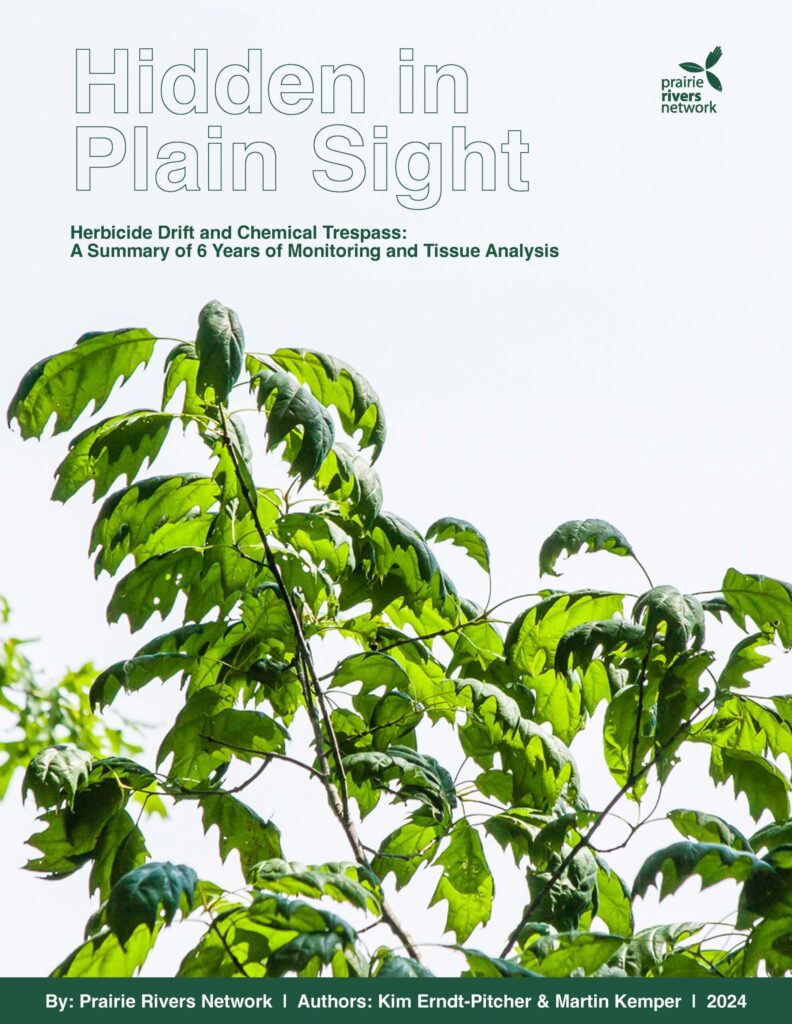
This summer, after more than six years of traveling around Illinois looking at herbicide damage, Prairie Rivers Network (PRN) released Hidden in Plain Sight, a report that is the culmination of our research.
The report found that trees are dying, gardens threatened, and children exposed to drifting herbicides across rural and urban Illinois. Herbicide drift, primarily from the agricultural industry, is damaging wild and cultivated plants and trees, threatening human health, and impairing our ability to adapt to climate change. Continue reading
166 total views

Resident families in Carver Park
The north-end community acknowledges that Champaign-Urbana is facing a growing population of homeless individuals. We fully understand the need, and benefits, of the Hope Village development. We realize it is vital that empathy be shown for the homeless and a sense of hope and opportunity be given. It’s also crucial that all citizens impacted by this project be understood. It’s not fair to jeopardize a vulnerable population to benefit another; therefore, the residents must have equitable treatment and respect.
The historically African American Champaign subdivision immediately impacted by this project is Carver Park, along with surrounding neighborhoods of both Urbana and Champaign. Hope Village, a tiny-homes project in the northernmost section of Urbana, began abruptly without input from the surrounding community. Continue reading
197 total views, 1 views today

An assortment of requested books being organized for shipment to IDOC facilities
There are about thirty Books-to-Prisoners programs across the US that provide free books to the incarcerated, but changes in regulations and technology practices are threatening their future. While these changes are not specifically book bans, they will directly affect the ability of the incarcerated to access reading material. Reductions in free book programs would impact self-education—a proven factor in reducing recidivism—and sever yet another link between those on opposite sides of prison walls. More importantly, these changes are creating yet another opportunity for private corporations to profit from a literally captive audience and their families.
A Local Tradition Since 2004
The UC Books to Prisoners program (B2P), has served Illinois Department of Corrections (IDOC) facilities across the state since 2004. It also operates a lending library at Champaign County Jail, and stocks the Champaign County Juvenile Detention Center library. Volunteers organize requests, gather books from donations, supplement these with occasional purchases, and mail the books to facilities. Continue reading
447 total views

iStock / Google Maps / Illustration by Katie Kosma. Used by permission
This article was originally published in Columbia Journalism Review on November 22, 2024. It has been shortened to fit and lightly edited for style.
At the end of November, 1999, when the World Trade Organization met at the Washington State Convention and Trade Center, so many thousands of protesters arrived on the scene that they effectively ended the conference; what ensued became known as the Battle of Seattle. Among the union members, environmentalists, and students who descended on the city was a group of volunteers keen to document the action live, by making use of the newly emerging internet. They were not, strictly speaking, journalists. One was Evan Henshaw-Plath, a coder and activist in his twenties who liked to pick up lefty mags at food coops and Whole Foods; in 1998, he’d created a calendar site called Protest.net. He and his cohort had grown frustrated by what they saw as a recurring problem: demonstrations seemed to receive press coverage only if conflict erupted––a clash with police, property damage, a scuffle with counterprotesters. “The response from journalists, even sympathetic ones, was that they needed a hook,” he recalled. “They needed a story.” As the WTO convened, a group of volunteers set up a makeshift media center, to do reporting of their own; he joined in to provide tech support. “Someone put a laptop with a camera and one of these Ricochet modem things in a heavy backpack,” he said. They set up a video stream of the protests—and of the pepper spray, tear gas, and stun grenades lobbed by police. The posts appeared on a website under the name IndyMedia, reaching more than a million people worldwide.
The site was intended to last only as long as the demonstrations. “The resistance is global,” the opening post went. “The web dramatically alters the balance between multinational and activist media. With just a bit of coding and some cheap equipment, we can set up a live automated website that rivals the corporates.” In the twenty-five years that followed, IndyMedia revealed the extent of that promise well beyond its early bloggers’ imaginations, as it grew into a full-fledged open publishing network of activist journalism, with some two hundred community centers and national and global online hubs. “It connected the development of local journalism that was for and by poor and working people of the Left, and it was able to scale from there,” Todd Wolfson, professor of journalism and media studies at Rutgers University, said. Its rise did not come effortlessly—IndyMedia’s anarchic roots and vast reach at times posed logistical challenges—and the emergence of social media eventually came to displace much of its infrastructure. (Henshaw-Plath became one of the first employees of Twitter, where he adapted IndyMedia’s live feed into the company’s signature product.) Many of the centers have since closed. But to Wolfson and Victor Pickard, a professor of media policy at the University of Pennsylvania, who jointly run an initiative called the Media, Inequality, and Change Center, IndyMedia still presents the most promising model in recent history for how grassroots community journalism can work. Continue reading
145 total views

The GOP Embraces Free Speech. An OtherWords cartoon by Khalil Bendid. Used by Creative Commons license CC BY-ND 3.0
The Editorial Collective of the Public i has decided to periodically republish past articles written for us by our late colleague and cofounder Belden Fields. We will also be publishing a special memorial issue for Belden around May, traditionally the month for celebrating International Workers’ Day and the labor movement, a movement to which Belden was deeply devoted, but also when appropriate highly critical of. For this issue we are republishing “D. J. Trump: Privileged Inciter-in Chief” from our May 2021 issue. As we enter the early weeks of the new Trump administration, this article has renewed and particular relevancy. It addresses the double standards embedded in our judicial system that too often allow lawbreakers like Trump and his privileged allies to escape punishment for their crimes, while poor and working-class individuals, especially those of color, endure unreasonably harsh sentences. Moreover, considering what has happened in the first weeks of the second Trump administration, this article suggests how the January 6 insurrectionists are useful tools in his authoritarian project. Indeed, as Janice Jayes points out in another article in this issue, there is method in the madness of pardoning violent extremists. Trump now has brownshirts, armed and dangerous extremist militias, available to do his bidding.
The federal anti-riot law (18 U.S. Code § 2101) was originally enacted in 1968 to silence and punish civil rights and anti-Vietnam War activists, but has been amended after constitutional challenges since then. It now states: Continue reading
155 total views, 2 views today
Friday Forum + Conversation Café
Spring 2025 Series
Please join the University YMCA and Diversity & Social Justice Education for our Spring 2025 Friday Forum + Conversation Café series. We will hear from community leaders tackling our most pressing public concerns through an unwavering pursuit of social justice. We are excited to focus the fall series on Democracy.
All presentations are open to the public and free on Fridays at 12 pm in Latzer Hall at the University YMCA. Free lunch is provided.
This series is supported in part through our McMahon Democracy Innovation Fund.
An audio recording of each program can be heard the following Wednesday at 6-7 pm on WEFT 90.1 FM, weft.org.
Also rebroadcast on UPTV6 YouTube channel at youtube.com/@UPTV6.
109 total views
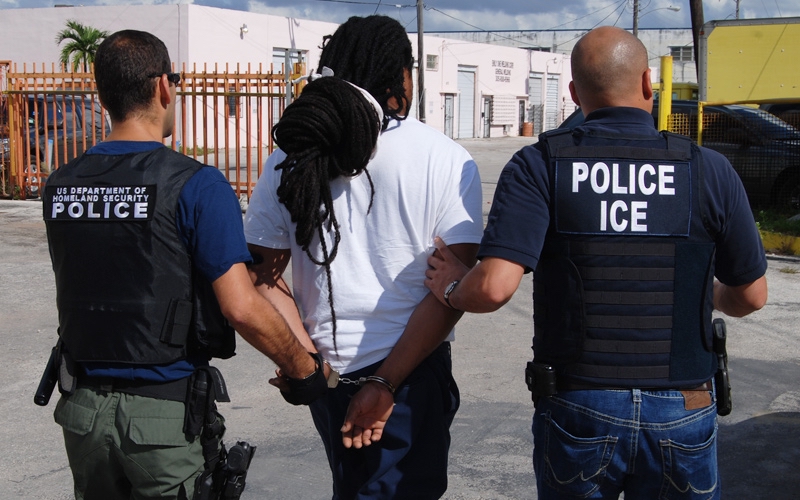
Many of our undocumented neighbors fear this fate. Photo
from US Immigration and Customs Enforcement (ICE)
740 total views, 1 views today

In 2016 students in CU recorded their fears following the election
Across Champaign-Urbana immigrant assistance organizations, schools, and local governments are worried but actively planning for the next administration. Eight years ago they underestimated Donald Trump, dismissing his vitriol as mere campaign posturing. This time they know that the incoming president has a plan that could endanger us all. By characterizing immigrants as a national security threat Trump could unleash Patriot Act provisions not just against immigrants, but against organizations that work with them, and possibly any who oppose his policies. And while the official actions the administration might take are sobering, the unofficial possibilities are even more alarming. Trump’s vilification of immigrants provides the justification for private actors to take the law into their own hands. For those who find that hard to imagine, just remember January 6, 2020.
Haunting Memories of 2016
“Eight years ago we had children crying in the hallways.” A local school employee sits opposite me in her office a few days after the election. In the hallway outside there is a display for the Mexican Day of the Dead. Inside, flags from the many countries represented in the student body decorate the walls. “The teachers didn’t know what to do with them,” she continued, “so they sent them down to my office. They were a wreck.”
They shared their worries, she recalled. “How will I live if they take my parents? I’m too young to get a job.” “What if my parents just don’t come home one day?” “Can they arrest me even though I’m just a kid?” “How long would my dad stay in jail before they deport him? I don’t want him to be cold.” There are hundreds of children in the CU school system who live in mixed-status families. Even if only one member of the family lacks documents, they all worry.
501 total views

Image by Mangokeylime, used under Creative Commons License CC BY-SA 4.0
Buckle up—it’s happening again. Donald Trump will be president of the United States on January 20, 2025. The next four years will be a constant struggle, as we fight to retain the meager rights and supports we currently possess in this cutthroat society, with all three branches of national government stacked against us.
The Democratic Party has once again demonstrated that “Republican-lite” is an ineffective political project. Aside from the uninspiring, completely lackluster policies emanating from the “at least I’m not Donald Trump” camp, any argument as to electability or political advantage in contrast to authentic leftist policies can be soundly put to bed with the failed Harris campaign.
1,183 total views, 1 views today
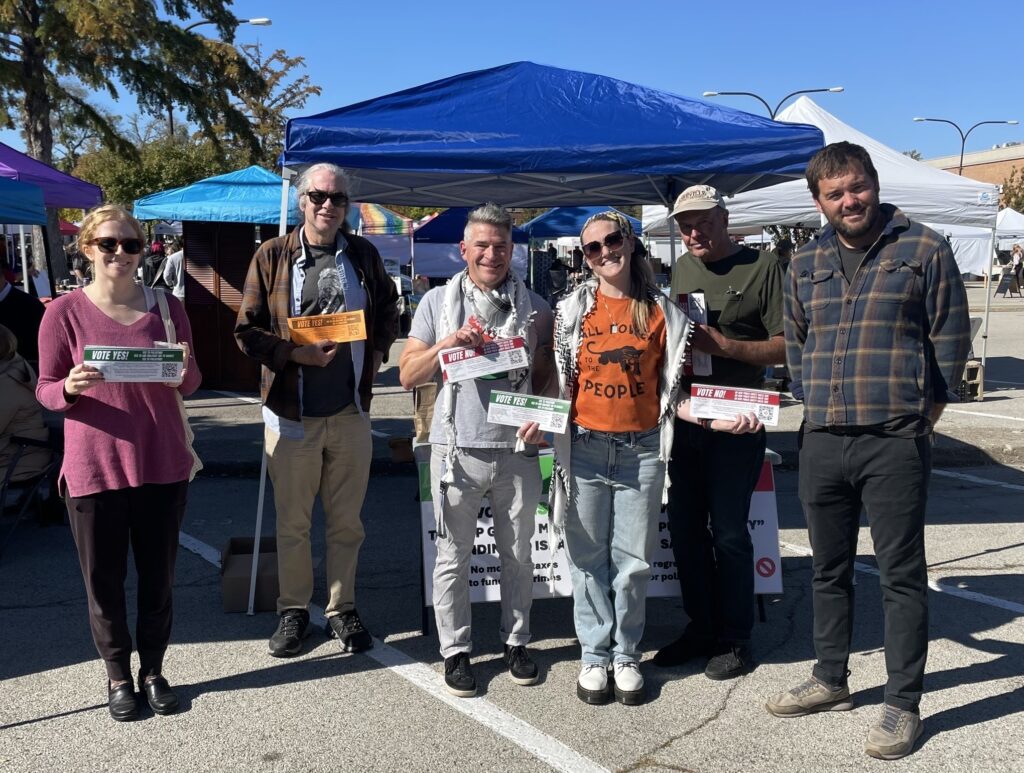
A group of Vote Yes on Question 1 campaigners stands in front of their farmers market booth in October. Photo by the author
As the Champaign-Urbana community considers how we’ll navigate a second Trump presidency, we can learn from the organizing that led to local ballot victories this past November. The massive effort that made these ballot wins possible holds part of the answer to the question many of us are asking: what do we do now?
In Cunningham Township, voters overwhelmingly passed advisory referendum Question One: “Shall the United States federal government and subordinate divisions stop giving military funding to Israel, which currently costs taxpayers $3.8 billion a year, given Israel’s global recognition as an apartheid regime with a track record of human rights violations?”
247 total views

We are already facing the consequences of Trump’s first administration. His appointment of three Supreme Court justices established a conservative majority on the bench, a decades-long goal of the anti-abortion movement. When that court voted 6 to 3 to overturn Roe v. Wade in 2022, they eliminated the federal right to abortion. Trigger laws allowed 13 states to immediately instate bans. And despite the success of some pro-abortion ballot measures, as of today only 15 states protect abortion rights to any degree. The results of these bans have been devastating. Roughly one in five patients nationwide have had to travel out of state to access abortion. Inequities in access to reproductive care have widened. Pregnant people denied emergency medical care have suffered and died. Infant mortality and maternal mortality have increased in ban states.
Things will only get worse. We must assume the Trump/Vance administration will follow the Project 25 playbook, further devastating reproductive rights. Here is a sampling of those recommendations: 1) Target medication abortions with moves against mifepristone, a medication used to end pregnancies. A majority of abortions now utilize this medication, and many people rely on telehealth to access a prescription. The administration could move to require in-person visits to prescribe mifepristone or attempt to reverse its FDA approval altogether. 2) Ban the mailing of medicines and equipment used to perform abortions by enforcing the 1873 Comstock Act. Anti-abortion activists have already begun testing this approach in Texas, and just down the road in Danville. 3) Prohibit federal funds from covering abortion care. This could remove funding from Planned Parenthood, impact people who receive Medicaid and Medicare, and affect millions who get health insurance through the federal government such as military personnel, prisoners, and Peace Corps volunteers. 4) Implement a “gag rule” that would block US money to any domestic or international organizations that “provide abortion services, information, counseling, referrals or advocacy.”
256 total views
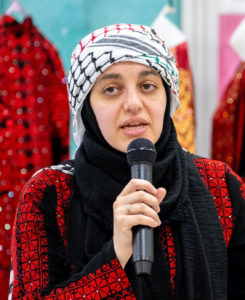
For many community members, Tuesday night means Champaign City Council (CCC) night. The council chambers are the spot to be! Dozens of diverse community members show up to ask our elected officials to endorse a resolution that includes 1) a call for an immediate and permanent ceasefire in Gaza, the occupied Palestinian territories, and Lebanon, and 2) a socially responsible investment policy where the city’s money is not invested in countries accused of genocide by the International Court of Justice and entities that profit off of them. Put simply, we are asking to end the city’s complicity in the ongoing US-backed Israeli genocide and any future genocides. We are asking the councilmembers to recognize us, and to invest in us and our community. We want to live in a city that takes a firmly anti-genocide stance.
We have been spending evenings at CCC for over half a year without any formal recognition of our demands. We have spent dozens of hours in audience participation educating the council (and the public) while pleading our case with CCC. We come in, we attend the meeting, we listen, we learn, we share our comments, and we leave. Week after week.
208 total views, 1 views today

In September of 2023 a mysterious journalistic force bombarded our county with hysterical pseudo-newspapers under the banner Chambana News. Though they took the form of an advertising sheet from Walmart or Menard’s, they were actually a classic example of disinformation, combined with misinformation. These fake newspapers aimed to instill panic in the public regarding the impending implementation of the Pretrial Fairness Act (PFA), part of Illinois’s Safe-T-Act, one of the most progressive pieces of criminal justice legislative reform of this century. Chambana News told us that we were about to witness a real-life version of The Purge, with thousands of people being released from jail and swarming into the streets like packs of dogs chasing a truckload of fresh meat.
Fortunately, time passes, and disinformation and misinformation are often proven false when their dire predictions fail to materialize. Now, just over a year into the implementation of the Pretrial Fairness Act, cash bond has disappeared. The vast majority of people who have been arrested are released almost immediately, as the act mandates. Instead of chaos, mayhem, and violence it has produced much of what it guaranteed: fewer people in jail, no one going into debt over repaying court bonds, and a fairer process of adjudication of cases. This is a remarkable success, but it is not without controversy from surprising quarters—the liberal Democrats of the County Board. Continue reading
394 total views
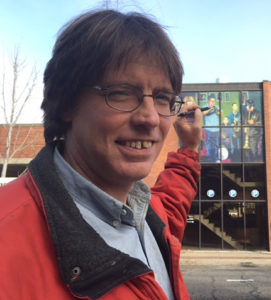
On the Illinois Public Media’s Dialogue radio program from September 12, 2024, Urbana Police Chief Larry D. Boone said, “My philosophy is you hide nothing from the public. The days of that type of policing are gone by the way of the dodo bird.”
As we try to solve the recent problem of citizens’ reports of crime being initially disregarded by the Urbana Police Department, it’s critical we understand what happens during the initial intake of a report. The public has been given four different stories about the intake process related to an August 6 call to the Urbana Police Department (UPD) front desk to report an attempted child abduction. It was only after citizens expressed frustration on social media with the lack of police response that the police followed up on the initial report and made an arrest. Subsequent requests for information on the call intake procedure have not been satisfactorily answered.
240 total views, 1 views today

Mrs. Cleveland and volunteers have been working to prepare the first exhibit for the Museum at the Urbana Champaign Independent Media Center
I would like to see this museum established here in our town of Urbana for the purpose of educating our people, especially our Black children: to teach them about our history and what Black people have contributed to this country, the harsh realities of slavery, and the barbaric treatment they faced just for having Negro faces. (The word “Negro” is part of our history, not something to hide from, and this museum is about facing our truth.)
The museum would have artifacts that have cultural and historical meaning. Painting, drawing, and other forms of art; stories from persons who are 65, 75, 80, or 100, depicting the Black struggles from “birth to death.” Stories about the Black slaves’ darkness, about their suffering, their despair—branded as three-fifths of a human. The Black slaves’ darkness casts a shadow over America up to today because of the ill-favored brutality that was used to dominate and control other human beings.
553 total views